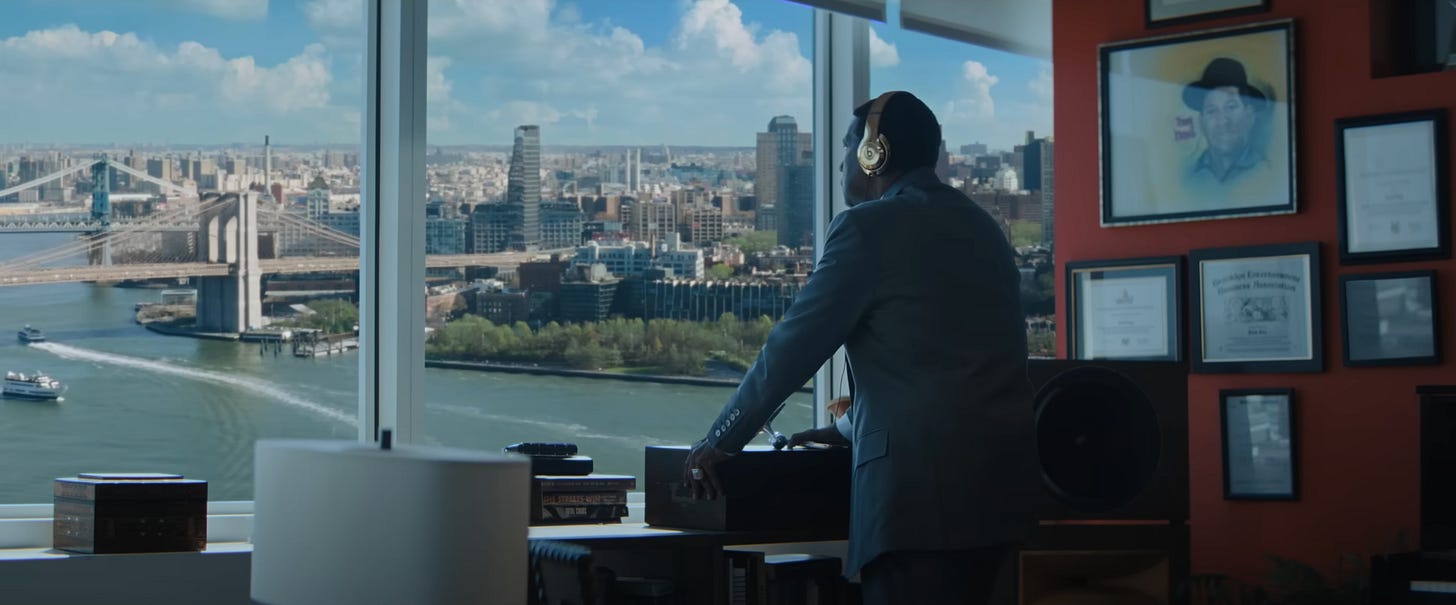Spike Lee remixes top-tier Akira Kurosawa-via-Ed McBain. The result: a masterful mishmash. As filthy rich but creatively stagnant NYC music mogul David King, Denzel Washington channels Toshiro Mifune, though at the Kabuki level of I Live in Fear (bug eyes; clucking tongue; rapid-fire interior monologues externally verbalized). The pre-abduction scenes have the streaming-era digi-sheen that spotlights pores and jowls while mutilating spirit, but there’s meta-method in the way editors Barry Alexander Brown and Allyson C. Johnson hack and slash it all so that certain actions and gestures (handshakes; hugs; vertically-and-horizontally-careening establishing shots) are repeated, reworked…rebooted?
We’re primed to feel unsettled. The realm of the Concrete Jungle plutocrat circa 2025 is an uncanny place where expositional screenwriting that Vince Gilligan once identified as from the “How long have we been brothers?” school is the language of the land. I laughed heartily in my indoor voice when the first truly static composition (capturing an extended, apprehensive convo between industry-titan-on-the-socioeconomic-downswing Dad and should-have-been-kidnapped-but-mistakenly-wasn’t nepo Son) makes prominent room for a Kamala Harris “Forward” poster. (Toni Morrison, Dr. King, James Brown, Muhammad Ali, et al get mere Godardian snap-inserts by comparison.) Is this Spike exercising Schumerian/Jefferiesian finger-wag (the doleful cinema of the strongly worded letter) or sending up same? Six, one. Half-dozen, other. Knicks game at 7!
What Lee really wants is to get to the streets. It’s here that the movie comes thrillingly alive with a Brooklyn-to-Bronx 4-train action sequence set during the Puerto Rican Day parade (Rosie Perez and Anthony Ramos presiding) and featuring the added impediment of Yankees fans (led by a hilariously overexcitable Nicholas Turturro) on the hive-minded move. The look goes occasionally grainy-celluloid grunge. The perpetually Allstate-ad abused Dean Winters is agreeably treated like a Polizei punching bag. But the trademark people-mover shot is saved for a late music video aside, after A$AP Rocky, as fame-hungry rapper Yung Felon, goes captivatingly toe-to-toe with Denzel in the first of two other-side-of-the-glass confrontations, both of which DP Matthew Libatique photographs with an expressively wild and evocatively human eye.
People look most like people when, even in conflict, they get mutual. High and low becomes head-to-head and, eventually one hopes, face to face. (To that end, Jeffrey Wright — though somewhat underutilized as David’s ex-con driver Paul, the accidental victim of the gone-awry ransoming — continues to have one of the most vivid visages in the biz.) Our celebrity grad-school NYU film prof can’t help but indulge in one flourish too many via a musical coda that resets the dial to a benevolently capitalist status quo. Though this ludicrously soaring endpoint (perhaps more Sirk, or better, Zemeckis’s Here than I’m giving it credit for) still possesses the stumblebum charm of a compassionate elder trying to get hip with the not-necessarily-alright youths, all while keeping an iron grip on his court-side season tix.


